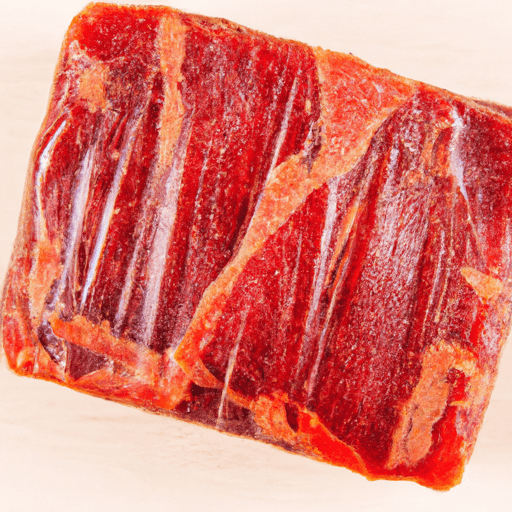Discover the Rich Flavors and Endless Possibilities of Beef Stock
Beef stock, a culinary cornerstone, is a deeply flavorful liquid derived from simmering beef bones, vegetables, herbs, and spices. This versatile ingredient serves as the foundation for countless soups, stews, sauces, and gravies. Its robust flavor adds depth and complexity to dishes, elevating them to new culinary heights. In this article, we’ll explore the tantalizing taste of beef stock, its common uses in cooking, its nutritional value, and dig into some interesting history and facts surrounding this savory elixir.
The Taste That Transforms
One of the most delightful aspects of beef stock is its rich, savory taste. The slow and gentle simmering of beef bones extracts collagen, marrow, and other flavorful compounds, resulting in a deep and complex umami flavor. This savory sensation stimulates our taste buds and enhances the overall taste profile of dishes, making them more satisfying and memorable.
A Versatile Kitchen Staple
Beef stock is the secret behind many beloved dishes across various cuisines. Its applications in everyday cooking are as diverse as they are delicious. Let’s delve into a few of the common uses:
- Soups and Stews: Beef stock forms the foundation for hearty soups and stews, providing a robust base that brings together all the ingredients. From classic beef and vegetable soup to comforting beef stew, its presence always shines through.
- Sauces and Gravies: When reduced, beef stock becomes a flavorful essence that adds depth to sauces and gravies. From a velvety red wine reduction to a luscious mushroom sauce, beef stock transforms ordinary dishes into extraordinary culinary creations.
- Braising and Braising Liquids: Tenderizing tough cuts of meat through braising becomes magical with the addition of beef stock. The slow cooking process allows the stock to infuse the meat, rendering it tender and succulent.
A Nutritional Powerhouse
Apart from its mouthwatering taste, beef stock also boasts several nutritional benefits. While the exact nutrient composition varies depending on the recipe and ingredients used, beef stock is generally rich in:
- Collagen: As collagen is extracted from the bones during the simmering process, beef stock becomes a natural source of this protein. Collagen supports healthy skin, joints, and aids digestion.
- Minerals: The slow extraction of minerals from the bones enriches the stock with calcium, magnesium, potassium, and other essential nutrients that contribute to overall health.
- Gelatin: The natural gelatin in beef stock may promote gut health and aid in digestion.
Unveiling History and Fun Facts
Beyond its culinary applications, beef stock has an intriguing history and some captivating facts:
- Foundations in French Cuisine: Beef stock, known as “fond de veau” in French, is a fundamental ingredient in classic French cuisine. It forms the base for many of their renowned sauces, including the velvety sauce espagnole and the luxurious demi-glace.
- Liquid Gold: The renowned chef Auguste Escoffier considered a good stock to be “the chef’s greatest treasure,” highlighting its importance in the culinary world.
- The Magic of Reduction: The process of reducing beef stock intensifies its flavors, leading to the creation of a glossy, concentrated sauce known as “glace de viande.” This reduction can elevate a dish to new gustatory heights.
Whether you’re crafting a soothing bowl of soup, a hearty stew, or a tantalizing sauce, beef stock is a culinary ally that will never disappoint. Its rich taste, versatile nature, and nutritional value make it an invaluable ingredient in any kitchen. So, go ahead, embrace the magic of beef stock, and let it transform your cooking into a sensational dining experience!
“Cooking is like love, it should be entered into with abandon or not at all.” - Harriet Van Horne
Facts about Beef Stock:
Origin: Beef stock, also known as beef broth, is a staple ingredient in many cuisines around the world. It has a long history and is believed to have originated in ancient times, likely in Europe, where the practice of simmering bones and meat to create flavorful broths dates back centuries.
Making Beef Stock: Beef stock is traditionally made by simmering beef bones, meat, and vegetables in water for an extended period of time. This slow and low process extracts the flavors, nutrients, and gelatin from the bones and meat, resulting in a rich and hearty liquid.
Common Uses: Beef stock is widely used as a base for soups, stews, and sauces. Its depth of flavor enhances the taste of various dishes, from classic beef stew to French onion soup and risottos. It also serves as a valuable ingredient in many gravies and braising liquids.
Nutritional Benefits: Beef stock is a source of essential nutrients. It contains minerals like calcium, magnesium, and phosphorus, as well as collagen and gelatin, which are beneficial for joint health and digestion. However, the exact nutritional profile may vary depending on the recipe and cooking method used.
Unique Properties: Beef stock has the ability to add richness and depth of flavor to many dishes due to the natural gelatin found in the bones. When cooled, a well-made beef stock will gel due to the collagen that has been extracted during the cooking process. This gelatin adds body and a velvety texture to sauces and soups.
Historical Significance: In European culinary traditions, beef stock has played a significant role for centuries. The French, in particular, perfected the technique of making a rich, flavorful stock known as “fond de veau” or “glace de viande.” This concentrated stock is used as a base for many classic French sauces and acts as a building block for numerous dishes in traditional French cuisine.
These facts offer a glimpse into the history, uses, nutritional benefits, and unique properties of beef stock. It is a versatile and valuable ingredient that adds depth of flavor to a wide range of dishes, making it a fundamental element in many culinary traditions.




Use the share button below if you liked it.
It makes me smile, when I see it.